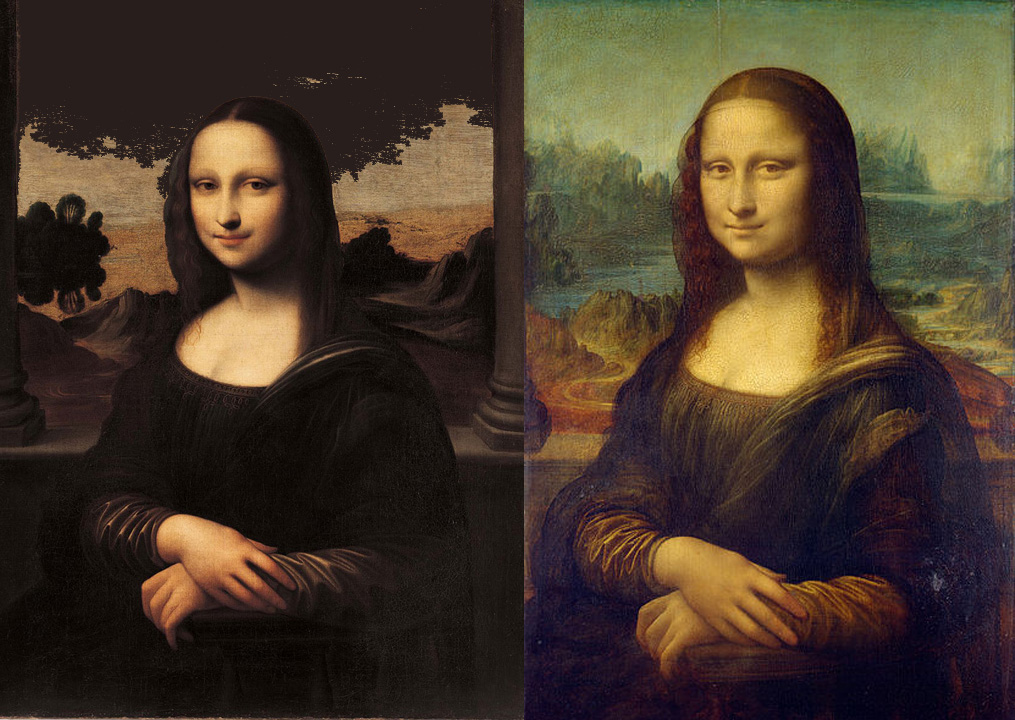Leonardo da Vinci’s Mona Lisa has been called “the best known, the most visited, the most written about, the most sung about, the most parodied work of art in the world.” (Did you catch the Lego Mona Lisa that made the rounds on the web last week?) Completed in the early 16th century, the painting offers a portrait of Lisa Gherardini, wife of a Florentine cloth merchant named Francesco del Giocond. (Hence why the painting is sometimes called La Gioconda or La Joconde.) Today, the Renaissance masterpiece hangs in the Louvre in Paris, where it’s visited by an estimated six million people each year.
There’s no shortage of debates surrounding the Mona Lisa. Was it completed in 1506? Or is 1517 a more accurate date? Does the portrait actually feature Lisa Gherardini? (Most art historians think so, but scholars have speculated about other figures, including Leonardo’s own mother, Caterina.) And then there’s this bigger question. Was da Vinci’s Mona Lisa his first Mona Lisa? That debate starts with a tantalizing piece of text written by the artist/art historian Giorgio Vasari in his 16th century book, The Lives of the Most Excellent Painters, Sculptors, and Architects. In a section called “Life of Leonardo da Vinci: Painter and Sculptor of Florence,” Vasari wrote: “Leonardo undertook to execute, for Francesco del Giocondo, the portrait of Monna Lisa, his wife; and after toiling over it for four years, he left it unfinished.…” And then Vasari attributed to the portrait some characteristics that don’t quite line up with the famous painting hanging in the Louvre today — “rosy and pearly tints,” eyes that had a “lustre and watery sheen which are always seen in life,” a nose “with its beautiful nostrils, rosy and tender,” etc. All of this left some to wonder: Was Vasari talking about another painting? Perhaps an earlier, unfinished version of the Mona Lisa?
Enter The Mona Lisa Foundation, a non-profit based in Switzerland, that claims they’ve perhaps found an earlier Mona Lisa. In an essay appearing on their website, and in a 20 minute video (top), the Foundation makes the case that “Isleworth Mona Lisa” (right above) was probably painted by da Vinci around 1505, though never completed. Centuries later the portrait ended up in the hands of an English collector Hugh Blaker, only to be then locked away in a Swiss vault for 40 years. It was finally brought out, and made available to the public for the first time, in 2012.
Skeptics have been quick to point out problems with the “Isleworth Mona Lisa.” Some note that it was painted on canvas, whereas Leonardo typically painted on wood. Others claim that x‑rays of the painting call its authenticity into doubt. And then others suggest that the “Isleworth Mona Lisa” is merely a late 16th century copy of the painting now hanging in the Louvre. (The Mona Lisa Foundation web site documents the skeptical claims and offers a rebuttal for reach.)
To be sure, the Isleworth Mona Lisa has its critics, but it also has some supporters. In September 2012, the Swiss Federal Institute of Technology in Zurich carried out carbon-dating tests on the canvas and confirmed that it was likely manufactured between 1410 and 1455, which helped refute claims that the painting was a late 16th century copy. Meanwhile, John Asmus, a UCSD physics professor who “introduced the use of holography, lasers, ultrasonic imaging, digital image processing, and nuclear magnetic resonance to art-conservation practice,” carried out a brushstroke analysis and concluded that “the same construction principles” were used in the design of both Mona Lisas, increasing the likelihood that they were created by the same artist. And finally, Joe Mullins, a forensic specialist trained at the FBI, “age regressed” the original Mona Lisa to see what she would have looked like at an earlier point in time. His conclusion? “Everything lined up perfectly.” “This is Mona Lisa, two different images at two different times in her life.”
But still, skeptics certainly remain.
via Metafilter
Related Content:
NASA Sends Image of the Mona Lisa to the Moon and Back
The Anatomical Drawings of Renaissance Man, Leonardo da Vinci
What Leonardo da Vinci Really Looked Like



da vinci, like tesla channeled the energy of the universe. both deep deep guys…
leonardo could have painted the mona lisa more than once to get practice and made a final project for some important reason no one will ever no because this life is not life there is no life this is an illucination